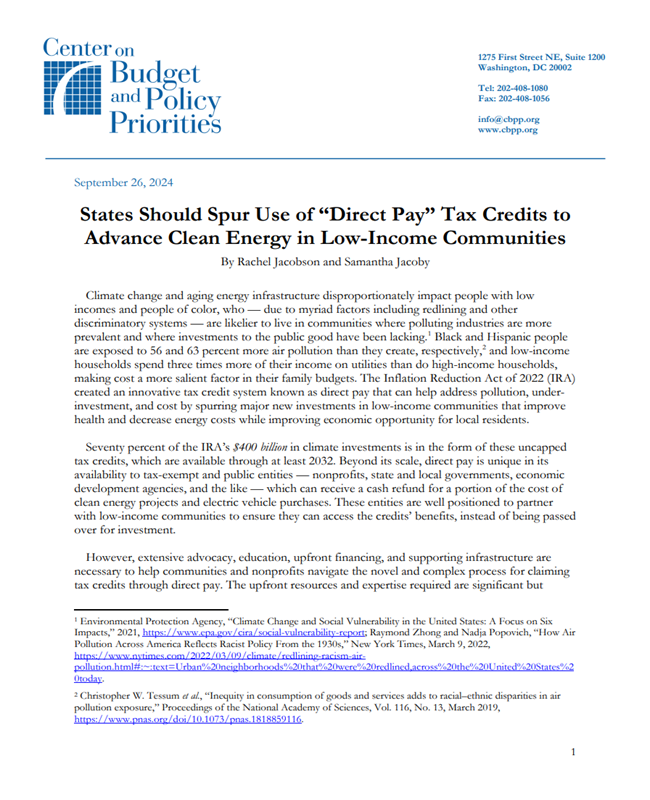Seventy percent of the IRA’s $400 billion in climate investments is in the form of these uncapped tax credits, which are available through at least 2032. Beyond its scale, direct pay is unique in its availability to tax-exempt and public entities — nonprofits, state and local governments, economic development agencies, and the like — which can receive a cash refund for a portion of the cost of clean energy projects and electric vehicle purchases. These entities are well positioned to partner with low-income communities to ensure they can access the credits’ benefits, instead of being passed over for investment.
States should take action to ensure the benefits of the IRA credits flow to residents of low-income and marginalized communities. State policymakers can, for example, help communities understand the range of investments that can receive support through direct pay and the process for securing clean energy project financing, increase access to that financing, create incentives to site clean energy projects in low-income communities, and ensure that the jobs offer opportunities and living wages for community residents.
More About this Resource
Publisher: Center on Budget and Policy Priorities
Date: September 26, 2024
Type: Report
Sector(s): Other Climate
State(s): None
